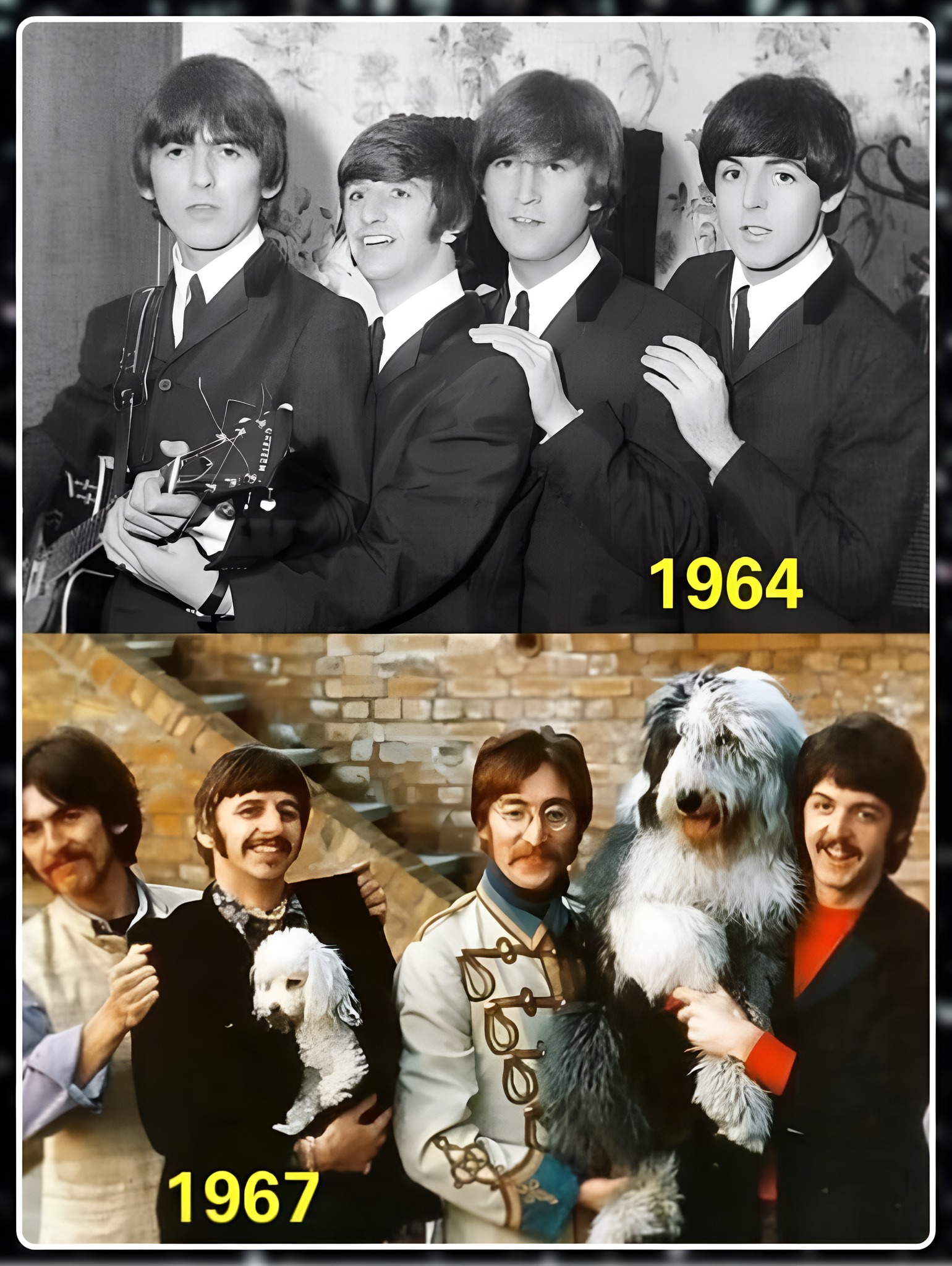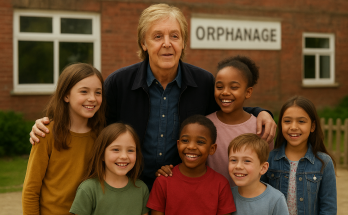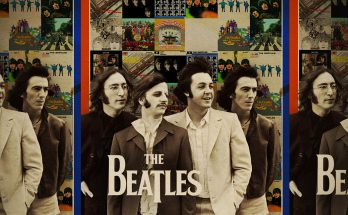When The Beatles touched down in America in February 1964, their mop-top haircuts, matching sharp suits, and cheeky charm captivated an entire generation overnight. Dubbed the “British Invasion,” their arrival didn’t just shift the pop charts — it cracked open a cultural revolution. But perhaps the most astonishing part? In just three years, from 1964 to 1967, The Beatles transformed music, fashion, and global youth culture in ways the world had never seen before. And at the end of that creative explosion — they were just getting started.
1964: The Beatlemania Era — Clean-Cut Rebels
In 1964, The Beatles were fresh-faced young men in collarless suits, bringing a wave of infectious pop energy to a world still healing from postwar rigidity. With their Ed Sullivan Show debut, 73 million Americans tuned in — a record at the time — and Beatlemania exploded.
Their early music, with tight harmonies and jangly guitars, was deceptively simple but revolutionary. Songs like “I Want to Hold Your Hand” and “She Loves You” weren’t just catchy; they broke from the doo-wop and crooner traditions, giving young people a new sound — one they felt was theirs.
But even in these early years, The Beatles were restless. They were pop stars with the soul of innovators. They quickly tired of formulaic pop and began experimenting — subtly at first — but with a growing confidence.
1965: A Subtle Shift Begins
By 1965, their musical and stylistic evolution was unmistakable. Their album “Help!” still held onto their pop roots, but signs of maturity crept in — both lyrically and musically. The title track was actually a cry for help from John Lennon, who was beginning to feel the crushing weight of fame.
And then came “Rubber Soul” — the first true pivot. With its introspective lyrics, use of the sitar on “Norwegian Wood,” and layered arrangements, the album hinted at where they were heading. They began growing out of their suits, literally and metaphorically.
In fashion, the clean-cut look began giving way to longer hair and more personal styles. They were becoming not just musicians, but icons of a countercultural shift.
1966: Pushing Boundaries — Musically and Spiritually
1966 marked a clear turning point. The Beatles stopped touring altogether, frustrated by poor sound quality, chaotic crowds, and the inability to replicate their increasingly complex studio sound on stage.
This freed them to push boundaries in the studio. The result was “Revolver,” an album light-years ahead of its time. It blended rock, psychedelia, Indian classical music, and avant-garde tape loops. Songs like “Tomorrow Never Knows” and “Eleanor Rigby” showed their willingness to tackle themes like death, isolation, and transcendence.
Their look now reflected the psychedelic world they were entering. Out went the suits; in came colorful jackets, round glasses, and an aesthetic inspired by Eastern philosophy, London’s underground art scene, and the swirling energy of the 1960s.
1967: The Psychedelic Peak — Sgt. Pepper and a Cultural Earthquake
If 1966 was the breaking point from the old world, 1967 was their full leap into the new.
“Sgt. Pepper’s Lonely Hearts Club Band” wasn’t just an album — it was a manifesto. A surreal collage of musical styles, studio experimentation, and lyrical depth, it became the soundtrack to the “Summer of Love.” Released in June 1967, it arrived as the Vietnam War raged and youth movements surged, offering an alternate vision of peace, imagination, and spiritual awakening.
The Beatles, now in their iconic psychedelic uniforms, had become the leaders of this cultural revolution. They were no longer the cute pop band from Liverpool — they were avant-garde artists, philosophers, and influencers of global change.
With “All You Need Is Love” broadcast live to over 400 million people across 25 countries, they became the voice of a generation striving for unity and meaning.
And They Were Just Getting Started…
What’s remarkable is that this entire transformation — from the boyish charm of “A Hard Day’s Night” to the mind-bending innovation of “Sgt. Pepper” — happened in just three years.
The Beatles didn’t just reflect the 1960s; they shaped them. They evolved so rapidly and so radically that by the time other bands caught up, The Beatles were already off exploring new territory.
By 1967, they were just stepping into the era of “The White Album,” “Let It Be,” and “Abbey Road.” The decade wasn’t over, and neither was their creative journey.
Conclusion: A Lightning Bolt of Cultural Change
From 1964 to 1967, The Beatles were more than a band — they were a lightning bolt through the heart of a changing world. They redefined what music could say, what musicians could look like, and what art could mean in a time of global upheaval.
Sharp suits and love songs gave way to sitars, soul-searching, and psychedelia. And as the world changed, The Beatles didn’t just change with it — they led the charge.
And the wildest part?
They were just getting started.



